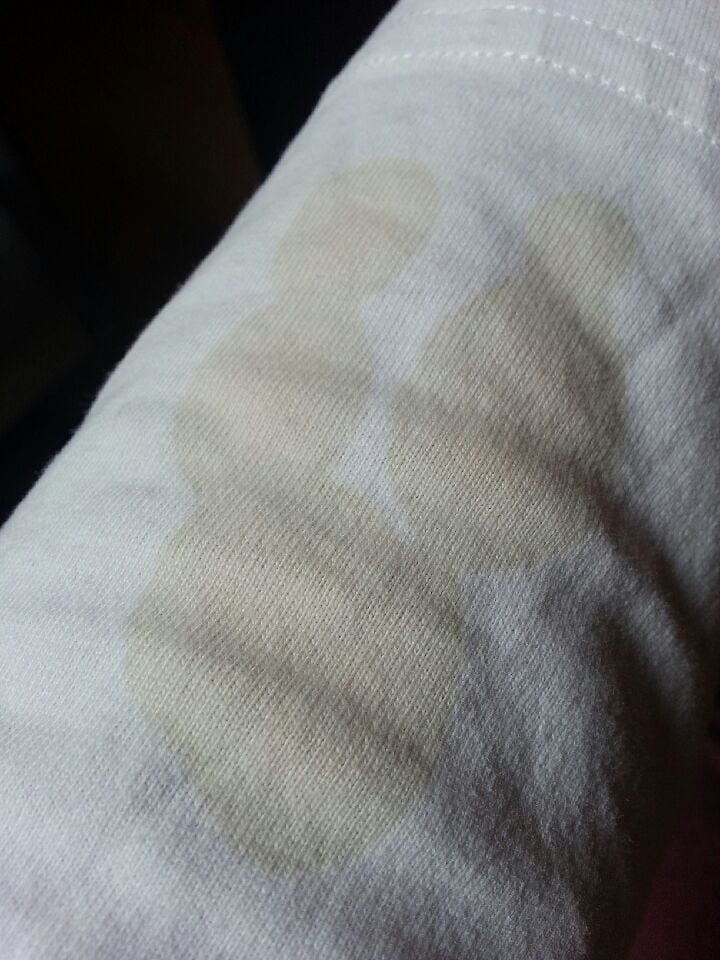In part 1 we looked at the background of Complice; how it was composed at the end of Coty’s life, the bottle and the packaging – and how they relate to Coty’s other works and the designs that were fashionable at the time of its release.
Now it’s the turn of the perfume itself; what does it smell like?
Let’s take a look.
In the vial the juice is a bronze-amber colour, which appears to be due to a mixture of natural oils and colourant.
When applied to cloth, the perfume leaves an unusual stain which is pink in the centre and yellow-green near the edge. It is in part caused by a yellow Schiff’s base, which is produced when aldehydes react with the methyl anthranylate used in orange flower accords.
While the perfume smells quite natural, there are synthetics too; this is a modern perfume in construction, if not in style. The sample tested is a Parfum – but it’s not an Extrait, the juice is much weaker than that and performs like an Eau de Parfum. A sample vial (of slightly less than 1ml) was used for the first test, and the odour yield was not very high for that amount of juice.
Complice is a fruity-floral Oriental. But that could be misleading because this isn’t the type of fruity floral we are used to. There are few of the red fruity synthetics that are used in modern fruity-florals, and consequently, Complice has a slightly antique air, being both delicately sweet and more and more lush as the profile centres on a liquid rose.
The rose is fabulous, but it’s not the star of the show.
Keep reading with a 7-day free trial
Subscribe to A Hundred Billion Bottles to keep reading this post and get 7 days of free access to the full post archives.




